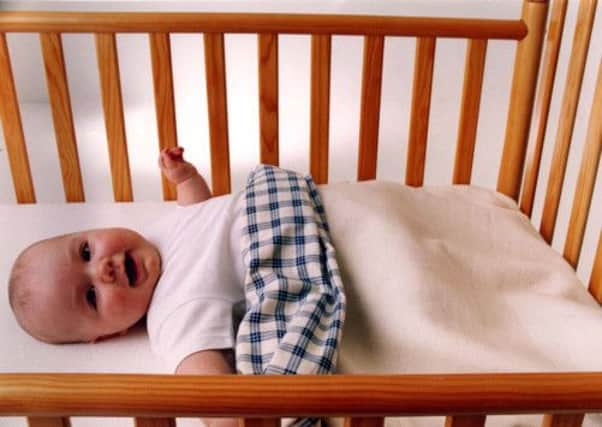Cot death could be caused by brain abnormality


Babies who die from the condition may appear normal, but can actually have problems that lead to Sudden Infant Death Syndrome (SIDS).
Brain stem death is a clinical syndrome defined by the absence of reflexes with pathways through the brain stem – the “stalk” of the brain which connects the spinal cord to the mid-brain, cerebellum and cerebral hemispheres – in a deeply comatose patient.
Advertisement
Hide AdAdvertisement
Hide AdResearchers from Boston Children’s Hospital say their study reinforces the reasons why some babies are more prone to cot death depending on the way they are placed when sleeping.
The study, published in the December issue of the medical journal Paediatrics, has shown infants who die suddenly and without explanation, and whose deaths are attributed to SIDS, have differences in brain stem chemistry from infants who die as a result of other causes.
Lead author Dr Hannah Kinney said these abnormalities impair brain stem circuits that help control breathing, heart rate, blood pressure and temperature during sleep.
The researchers believe this prevents sleeping babies from rousing when they re-breathe too much carbon dioxide, due to inadequate ventilation, or become overheated.
At the same time, epidemiologic studies have shown that infants dying suddenly and unexpectedly are often found in unsafe sleep environments, such as sleeping face down with their face in the pillow, or sleeping with another person in the bed.
In the new study, Dr Kinney’s team re-examined data, reviewing the cases of 59 infants who died suddenly and unexpectedly, were autopsied and had brain stem samples available for analysis.
The researchers grouped the infants according to sleep circumstances, those considered safe, where asphyxia was not likely, or unsafe – based on death-scene reports.
In the end, they compared 15 infants with SIDS whose deaths were deemed not to involve asphyxia, 35 SIDS infants whose deaths were possibly asphyxia-related and nine infants who clearly died from other causes .
Advertisement
Hide AdAdvertisement
Hide AdDr Kinney said: “Even the infants dying in unsafe sleep environments had an underlying brain stem abnormality that likely made them vulnerable to sudden death if there was any degree of asphyxia.
“The abnormality prevents the brain stem from responding to the asphyxial challenge and waking.”
Investigators believe these findings confirm that death is associated with underlying vulnerabilities, and not all infants who die in compromised sleep environments are normal.
Dr Kinney added: “We have to find ways to test for this underlying vulnerability in living babies and then to treat it. Our team is focused now upon developing such a test and treatment.
“Safe sleep practices absolutely remain important, so these infants are not put in a potentially asphyxiating situation that they cannot respond to.”
Around 40 babies die of SIDS in Scotland every year, the equivalent of a death every nine days.